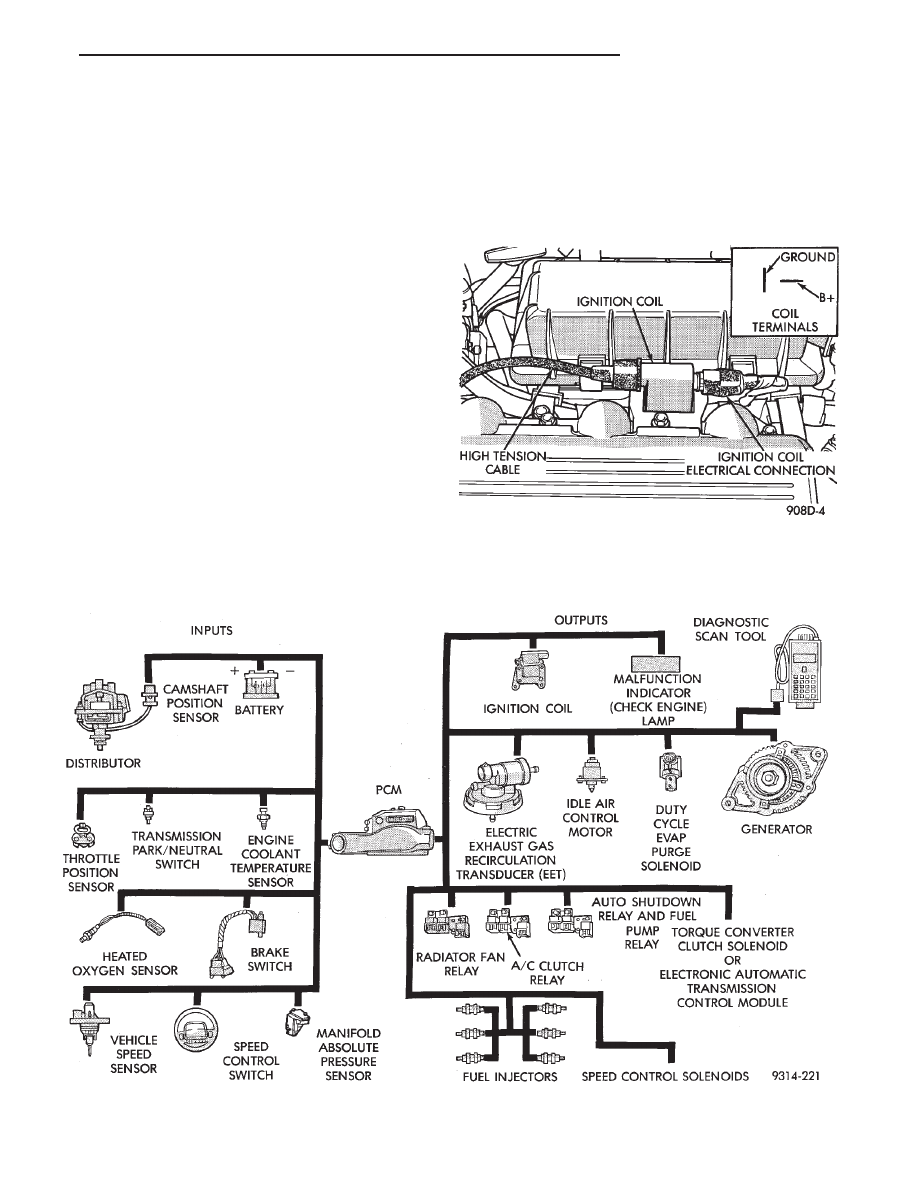Chrysler Le Baron, Dodge Dynasty, Plymouth Acclaim. Manual - part 52

3.0L MULTI-PORT FUEL INJECTION—GENERAL DIAGNOSIS
INDEX
page
page
Fuel System Diagram
. . . . . . . . . . . . . . . . . . . . 125
Visual Inspection
. . . . . . . . . . . . . . . . . . . . . . . . 125
FUEL SYSTEM DIAGRAM
The 3.0L MPI system is managed by the PCM. The
PCM receives inputs from various switches and sen-
sors (Fig. 1). Based on these inputs, the PCM adjusts
ignition timing and idle speed through various out-
put devices. Refer to the Multi-Port Fuel Injec-
tion—3.0L Engine section of this group for system
and component descriptions.
VISUAL INSPECTION
Perform a visual inspection for loose, disconnected,
or misrouted wires and hoses before diagnosing or
servicing the fuel injection system. A visual check
saves unnecessary test and diagnostic time. A thor-
ough visual inspection includes the following checks:
(1) Check for correct spark plug cable routing. En-
sure the cables are completely connected to the spark
plugs and distributor.
(2) Check ignition coil electrical connections (Fig.
2).
(3) Verify the electrical connector is attached to
the Purge Solenoid (Fig. 3).
Fig. 1 Multi-Port Fuel Injection Components
Fig. 2 Ignition Coil Electrical Connection
Ä
FUEL SYSTEMS
14 - 125